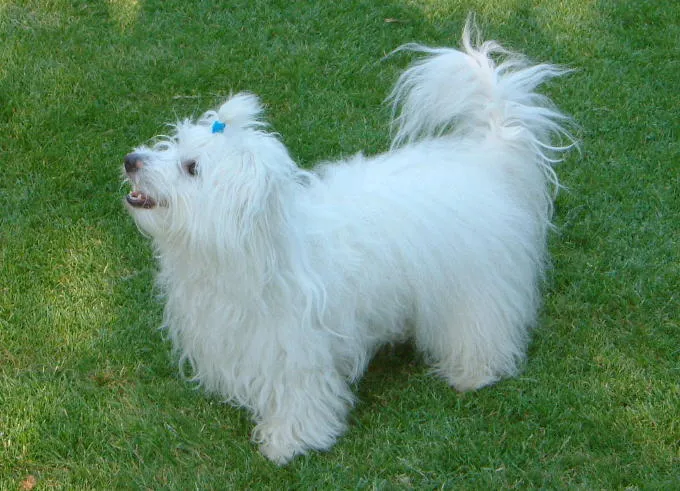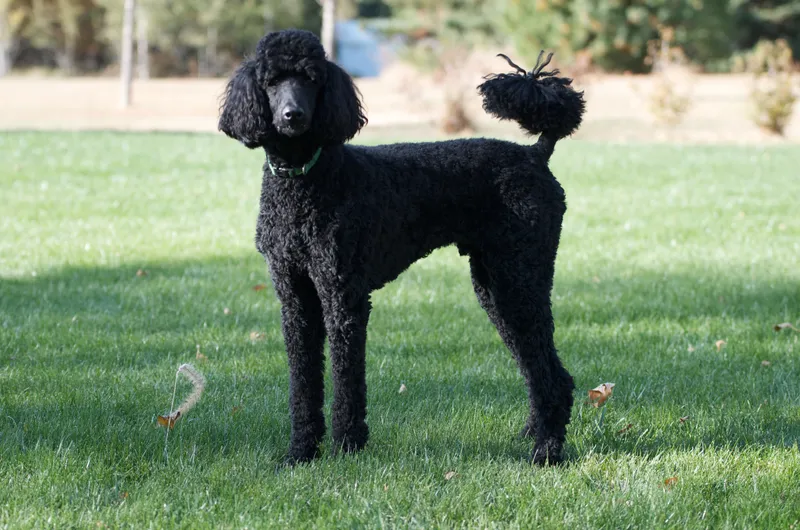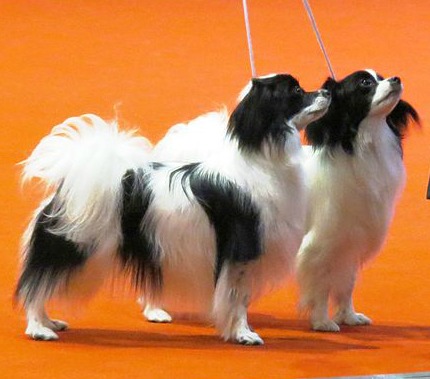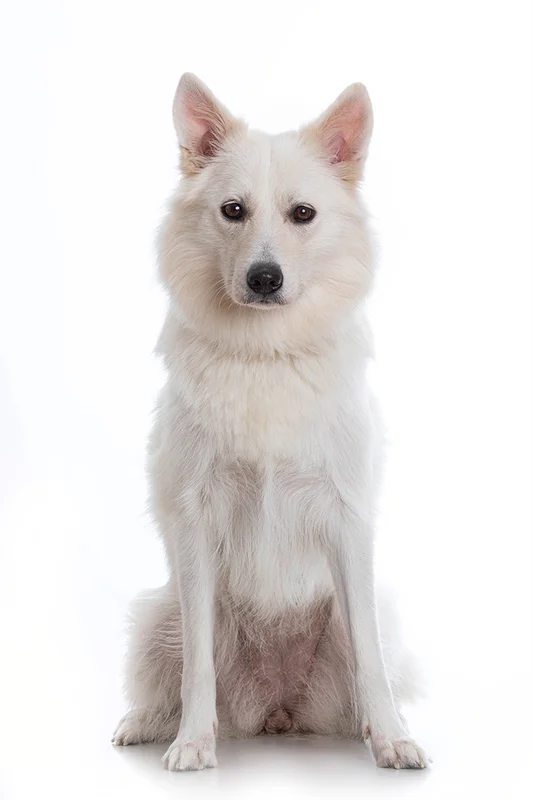Bichon Frise
The Bichon Frise is a small, cheerful dog known for its fluffy white coat and playful personality. This affectionate breed is hypoallergenic, making it a great choice for families.
Overview
🐕Breed Overview
✨Key Traits
💡What Makes Bichon Frise Special
Bichon Frises are characterized by their fluffy white coats, which require regular grooming to maintain their appearance. Their cheerful and playful nature makes them a favorite among families, as they are known to be gentle and patient with children.
They are intelligent and can learn tricks quickly, although they may take longer to housetrain than some other breeds. Their friendly demeanor extends to other pets, making them a great addition to multi-pet households.
Bichons are also known for their adaptability, thriving in various living environments, including apartments and homes with small yards. Their low-shedding, hypoallergenic coat makes them suitable for allergy sufferers, further enhancing their appeal as family companions.
The Bichon Frise is a small, cheerful dog known for its fluffy white coat and playful personality. Originating from the Mediterranean, this breed has a rich history, once favored by royalty and later becoming a beloved companion for families. 5 inches and a weight of 10 to 16 pounds, the Bichon Frise is compact yet sturdy.
Its double coat is hypoallergenic, making it an excellent choice for allergy sufferers, and requires regular grooming to maintain its signature powder-puff appearance. Bichons are friendly, affectionate, and thrive on human companionship, making them great pets for families with children and other pets. They are intelligent and eager to learn, although they may take longer to housetrain than some other breeds.
Regular exercise, including walks and playtime, is essential to keep them happy and healthy. With an average lifespan of 12 to 15 years, Bichon Frises are known for their longevity and overall good health. Their playful nature and love for attention make them a delightful addition to any household, and they often bring joy and laughter to their families.
Whether participating in agility training or simply cuddling on the couch, the Bichon Frise is a devoted companion that thrives on love and interaction.
🎉Fun Facts
Bichon Frises are known for their ability to perform tricks and entertain, making them popular in circuses and street performances.
Bichons have a unique ability to bond closely with their owners, often following them around the house and seeking attention.
Despite their small size, Bichon Frises are known for their spirited personalities and can be quite vocal when excited.
They are often described as 'smiling' due to their cheerful expressions and playful demeanor.
Breed Characteristics
Family & Friends
Good Behavior
Get Up & Go
Household Harmony
Temperament & Personality
✨Key Traits
🐕Core Temperament
The Bichon Frise is characterized by its gentle and affectionate temperament. They are playful and energetic, often displaying a cheerful attitude that endears them to their families.
Bichons are known for their sociability, getting along well with children, other pets, and strangers. They are sensitive and responsive to their owners' emotions, making them excellent companions for families.
While they can be prone to barking, this behavior can be managed with proper training and socialization. Overall, the Bichon Frise is a loving and devoted breed that thrives on human interaction and companionship.
💫Personality Profile
The Bichon Frise is a lively and affectionate breed, known for its playful and cheerful disposition. They thrive on human companionship and are eager to please, making them excellent family pets.
Bichons are generally friendly towards strangers and other animals, displaying a sociable nature that endears them to everyone they meet. Their playful spirit means they enjoy interactive games and activities, and they often seek attention and affection from their owners.
While they can be prone to barking, this behavior can be managed with proper training and socialization. Overall, the Bichon Frise is a devoted companion that brings joy and laughter to any household.
🔊Vocal Tendencies
Bichon Frises are known for their vocal nature, often barking to express excitement, alertness, or to seek attention. They may bark when greeting visitors, during playtime, or when they feel bored or anxious.
While they are not excessive barkers, their tendency to vocalize can be managed through training and providing adequate mental stimulation. Owners should be prepared for some barking, especially if the dog is left alone for extended periods, as they thrive on companionship and may express their feelings through vocalizations.
Overall, their barking is typically friendly and playful rather than aggressive.
Affection & Social Traits
Energy & Activity
Communication Style
Care Requirements
🏃♂️Exercise Requirements
Daily Exercise
The Bichon Frise is a moderately active breed that requires regular exercise to maintain its physical and mental well-being. Ideally, they should engage in at least 30 minutes to an hour of exercise daily, which can be broken down into shorter sessions throughout the day.
Activities such as short walks, indoor play sessions, and interactive games like fetch or tug-of-war are excellent for keeping them stimulated. While they enjoy outdoor activities, they are also well-suited for apartment living, as long as they receive sufficient playtime and mental engagement indoors.
Puppies may require shorter, more frequent play sessions, while senior Bichons may benefit from gentler activities to accommodate their energy levels and health conditions. Regular exercise helps prevent obesity, promotes cardiovascular health, and reduces behavioral issues stemming from boredom or excess energy.
Preferred Activities
🏠Living & Adaptability
Space Requirements
Bichon Frises are adaptable and can thrive in various living environments, including apartments and homes with small yards. They do not require a large outdoor space, but they do need a safe area to play and explore.
For apartment dwellers, it's essential to provide regular opportunities for outdoor exercise and socialization. Owners should ensure that the living space is free from hazards and that the dog has access to toys and activities to keep them engaged.
Due to their small size and friendly nature, they can comfortably live in urban settings, but they should not be left alone for extended periods to prevent separation anxiety.
Climate Preference
🍲Feeding Guide
Schedule
Food Types
Portion Size
Special Nutritional Needs
Bichon Frises may have specific dietary requirements, particularly regarding their dental health. Regular dental care is essential to prevent tooth loss, which is common in the breed. Some Bichons may also have food sensitivities, so it's important to monitor their reactions to new foods and consult a veterinarian for dietary recommendations.
✨Grooming Requirements
Grooming Overview
The Bichon Frise has a soft, curly double coat that requires regular grooming to prevent matting and maintain its fluffy appearance. Owners should brush their Bichon at least three times a week, using a slicker brush and a comb to remove tangles and loose hair.
Regular baths are necessary to keep the coat clean and fresh, and professional grooming is recommended every 1-2 months to trim the coat and maintain its shape. Special attention should be given to the ears, as they can trap moisture and debris, leading to infections.
Regular nail trimming and dental care are also essential to ensure overall health and hygiene.
Care Schedule
Brush 3 times a week, bathe monthly, trim nails every 2-4 weeks.
Health Profile
⚕️Health Care
Regular health care is vital for the Bichon Frise's longevity. Routine veterinary check-ups, vaccinations, and preventive treatments can help detect and address health issues early.
Dental care is particularly important, as Bichons are prone to dental problems. Maintaining a healthy diet, providing regular exercise, and monitoring for any changes in behavior or health can contribute to a longer, healthier life.
Health Issues Overview
⏳Average Lifespan
Genetic Factors
Genetics play a significant role in the Bichon Frise's lifespan, with hereditary health issues such as patellar luxation and cataracts being common in the breed. Responsible breeding practices that prioritize genetic diversity can help reduce the prevalence of these conditions.
Potential owners should seek reputable breeders who conduct health screenings and provide health guarantees for their puppies. Understanding the genetic background of the dog can help owners make informed decisions regarding care and health management.
Living Conditions
The Bichon Frise's lifespan can be influenced by various environmental factors, including living conditions, climate, and social interactions. A stable and loving home environment, along with regular veterinary care, can significantly enhance their longevity.
Exposure to harsh weather conditions should be minimized, as Bichons are sensitive to extreme temperatures. Regular exercise and mental stimulation are crucial for maintaining their health and preventing obesity, which can lead to various health issues.
Social interactions with humans and other pets also contribute to their overall well-being, reducing stress and anxiety.
🏥Common Health Issues
Patellar Luxation
Warning Signs
🔬Diagnosis
Veterinarians typically diagnose patellar luxation through physical examination and imaging studies.
💊Treatment
Treatment options include pain management, physical therapy, and surgery for severe cases.
📝Management Tips
Weight management, physical therapy, and in severe cases, surgical intervention may be necessary.
Cataracts
Warning Signs
🔬Diagnosis
Cataracts are diagnosed through a veterinary eye examination.
💊Treatment
Surgical removal of cataracts is the most common treatment.
📝Management Tips
Regular veterinary check-ups and monitoring for changes in vision are essential.
🛡️Preventive Care
🔬Hip Evaluation
Hip Evaluation assesses the hip joints for dysplasia and other abnormalities, which can affect mobility and quality of life.
📅 Recommended annually for adult dogs, especially those with a family history of hip issues.
🔬Eye Examination
Eye Examination checks for common eye conditions such as cataracts and retinal issues, which are prevalent in the breed.
📅 Recommended annually, especially for older dogs.
🔬Knee Evaluation
Knee Evaluation assesses the patellar luxation condition, which is common in Bichon Frises and can affect their mobility.
📅 Recommended annually for adult dogs.
🔬DNA for PRA
DNA testing for Progressive Retinal Atrophy (PRA) helps identify genetic predispositions to eye diseases that can lead to blindness.
📅 Recommended for breeding dogs and those with a family history of eye issues.
Training
🧠Intelligence & Trainability
💪Work Drive
Bichon Frises thrive on companionship and enjoy being involved in family activities. They have a playful nature and require regular mental stimulation to keep them happy.
Activities such as agility training, obedience classes, and interactive games can fulfill their need for tasks and help prevent boredom. Their history as performers means they often enjoy showing off their skills, making training sessions a fun and engaging experience.
⚠️Training Considerations
Bichon Frises can face challenges with housetraining, often taking longer to learn than other breeds. This can be attributed to their playful and sometimes stubborn nature.
To overcome this, owners should employ consistent and positive reinforcement training methods, using treats and praise to encourage desired behaviors. Additionally, early socialization is crucial to help them adapt to various environments and reduce any potential anxiety.
Some Bichons may also exhibit barking tendencies, particularly when bored or left alone, so providing ample mental stimulation and companionship is essential to mitigate this behavior.
📝Training Tips
Training a Bichon Frise can be a rewarding experience due to their intelligence and eagerness to please. Positive reinforcement techniques, such as clicker training and reward-based methods, work best for this breed.
Start with basic commands like sit, stay, and come, gradually introducing more complex tricks as they master the basics. Consistency is key, and short, engaging training sessions will keep their attention.
Socialization with other dogs and people from a young age is also important to develop their confidence and friendliness. Enrolling in obedience classes can provide valuable guidance for both the owner and the dog.
History & Heritage
📜Origin Story
The Bichon Frise's story begins in the Mediterranean region, where it was bred from a mix of larger water spaniels and small white dogs. Spanish sailors played a crucial role in spreading the breed, taking them to various ports and introducing them to different cultures. By the 14th century, the breed had made its way to Italy, where it quickly became a favorite among the upper class.
The Bichon Frise was often depicted in paintings of the time, showcasing its popularity. However, after the French Revolution, the breed's status declined, and it became a common street dog. Its survival was ensured by its talent for performing tricks, which led to its association with street performers and circuses.
The breed saw a resurgence in popularity in the mid-20th century, particularly in the United States, where it became a cherished companion.
⏳Development History
The Bichon Frise's lineage can be traced back to the 13th century, originating from the Mediterranean area. It is believed to be a descendant of the Barbet and small white dogs.
The breed was popularized in royal courts, especially during the Renaissance, where it was favored by nobility. However, its popularity waned in the late 1800s, leading to its association with street performers and circuses.
The breed was officially recognized in France in 1933 and later gained popularity in the United States in the 1950s, culminating in its recognition by the American Kennel Club in 1973.
🛡️Purpose & Historical Role
Historically, the Bichon Frise served as a companion dog, prized for its cheerful demeanor and affectionate nature. It was often seen in the company of nobility and was known for its ability to perform tricks, making it a popular choice for entertainers and street performers. In modern times, the Bichon Frise continues to fulfill its role as a beloved family pet, known for its hypoallergenic coat and friendly disposition.
🏺Cultural Significance
The Bichon Frise has a rich history that dates back to ancient times, particularly in the Mediterranean region. Originally bred as a companion dog, it became a favorite among European royalty, especially in France and Spain.
Its cheerful disposition and charming appearance made it a popular subject in art and literature. The breed's ability to perform tricks helped it survive periods of decline, particularly during the late 19th century when it transitioned from a royal pet to a common street dog.
Today, the Bichon Frise is celebrated for its hypoallergenic qualities and remains a beloved family pet, often seen in various media and popular culture.
Conservation Status
This breed is well-established with healthy population numbers.









